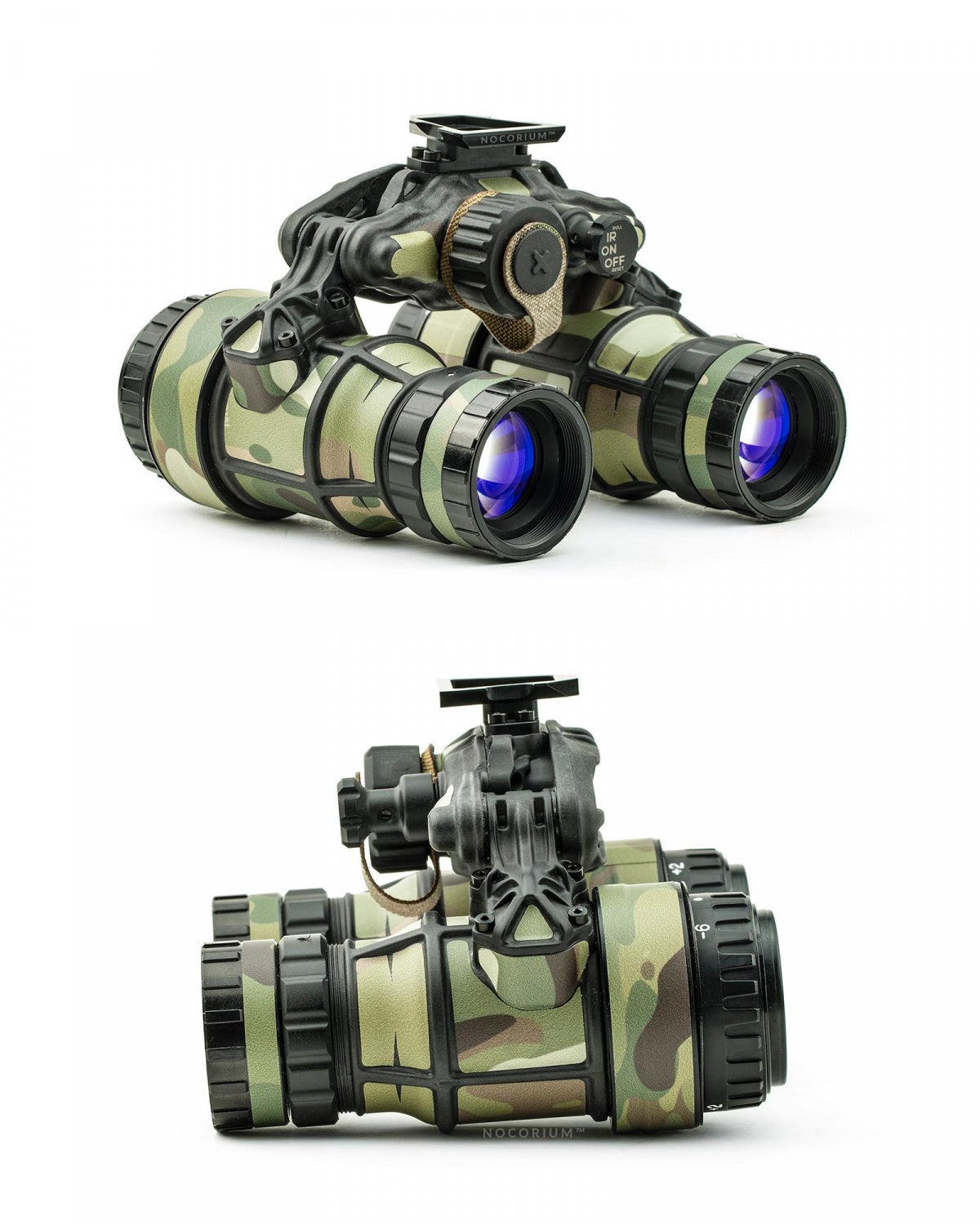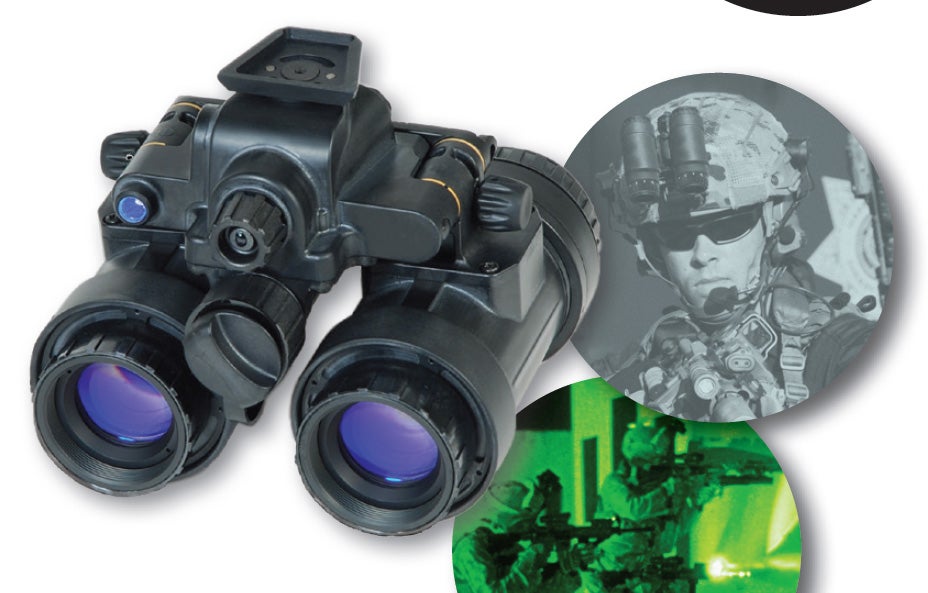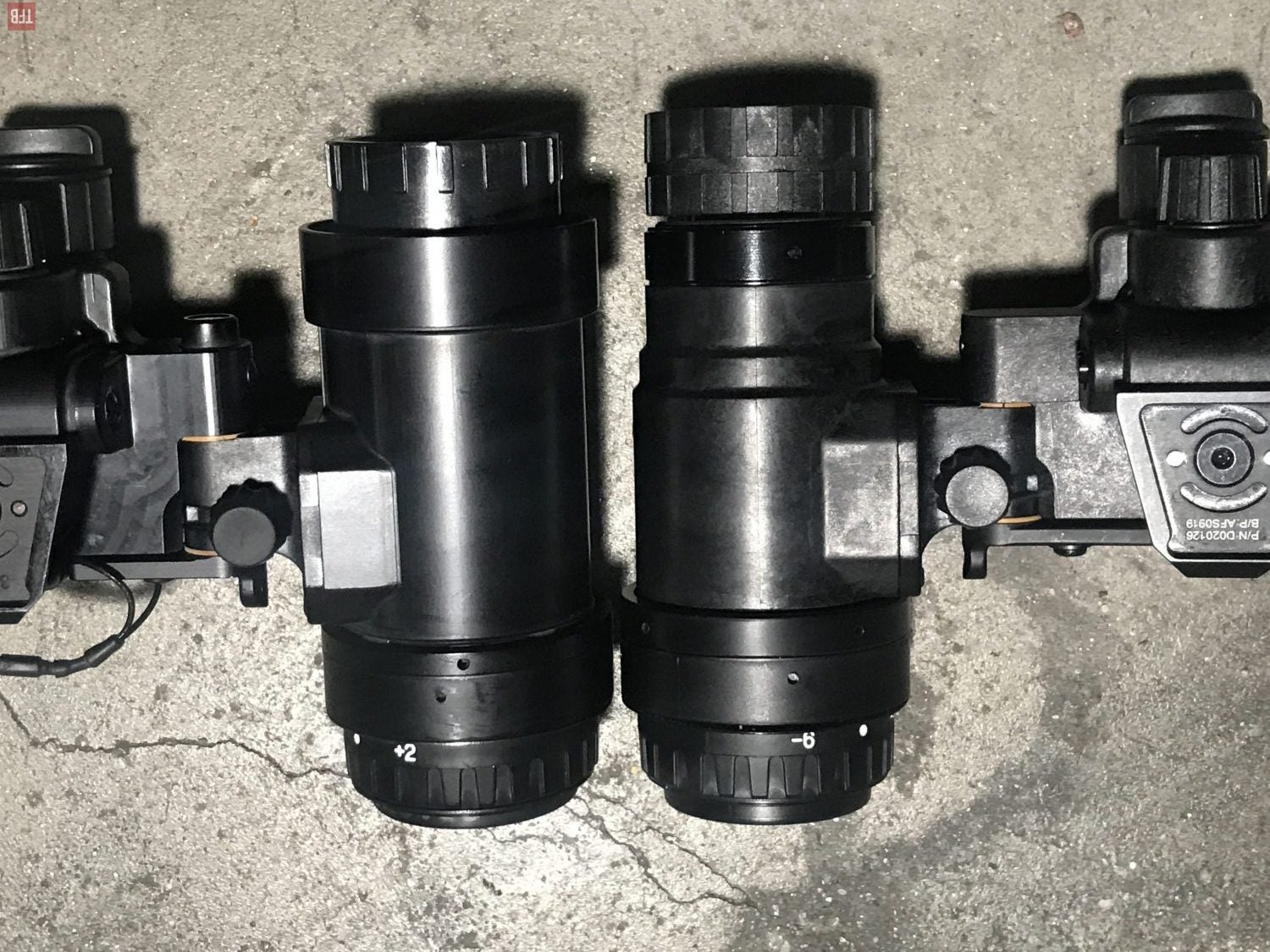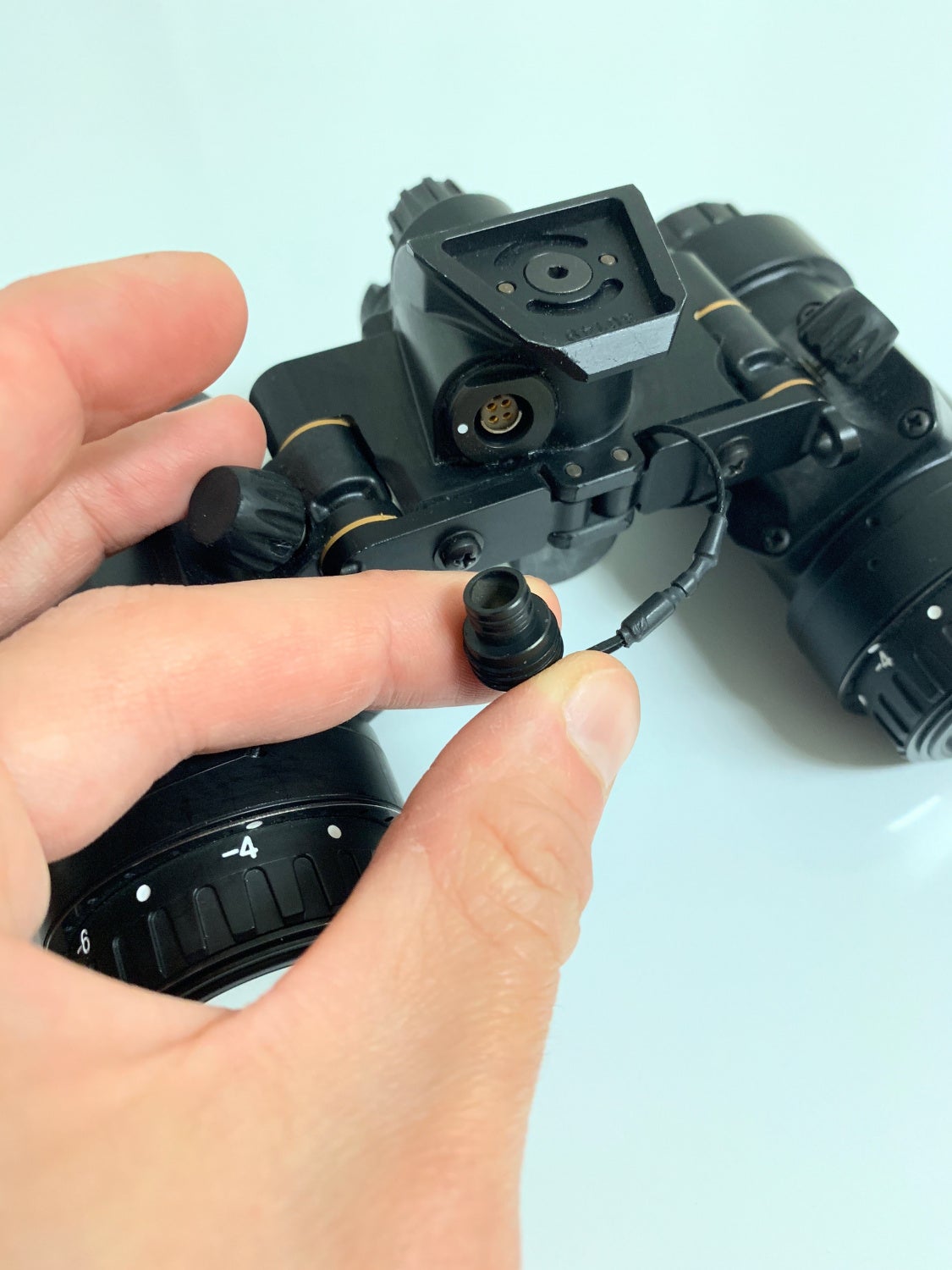For this week’s installment on Friday Night Lights, you get a two-for-one Dual Tube Spotlight. Just before flying out to New Orleans for TFB Gunfest, I met up with Alex Ko of Nocorium. He had a set of DTNVS and BNVD-1531 housings that he was patterning for his NVG wraps. I got a chance to take a look at them in detail.
Act In Black DTNVS
Last January we saw a pre-production sample of the DTNVS (Dual Tube Night Vision System) at the TNVC booth back during SHOT SHOW 2020. Well, just last month the production versions have finally been released in the US. Alex Ko was lent a DTNVS to pattern wraps off of. I got a chance to take a closer look at the DTNVS and compare it to the predecessor, the DTNVG.
Both bino housings are made by Act In Black in Luxembourg. The DTNVS is the next evolution of the DTNVG. They claim it is lighter weight and features interpupillary distance stops. Something the DTNVG does not have.


Exterior wise I do not see any significant changes since last January.

The bridge between the monocular pods has a lot less material than the DTNVG.

The battery compartment appears to have been raised up and centered along the axis of the bridge.

See how the DTNVG at the bottom has a triangular-shaped cross-section for the bridge? Whereas the DTNVS is like a squished Zelda rupee shape on its side. Also, you can see that the onboard IR Illuminator has been moved between the battery compartment and the ON switch.


The DTNVS has a lot of scalloped surfaces partially to reduce weight as well as provide strength. It almost looks like some form of exoskeleton designed by H.R. Giger.


One of the features missing from the DTNVG are lanyard loops for securing the goggle or anchoring using the bungees on your helmet. The DTNVS has lanyard loops molded into the bridge.


The bottom side of the DTNVS


DTNVS with Jerry-C ECOTI.
This particular set of DTNVS has a prototype infinite focus stop ring just behind the objective lenses.



As mentioned earlier, the DTNVS has interpupillary distance (IPD) stops. However, it is an add on accessory. See the photo below posted by NightOps Tactical. The IPD stop rear plate features two angled thumb wheels. These move two independent IPD stop pins that move downwards and touch the monocular pod. This allows you to set the distance between the monocular pods to your eyes. The IPD stops will stay where you set them so if you roll the monocular pods out of the way, swinging them down will stop where you set the IPD.

There are some DIY hacks people have come up with for the DTNVG using small zip ties to act like an IPD stop.
On TNVC’s website, the DTNVS is listed at weighing 17.9 oz. However, when Alex Ko weighed it against his personal set of wrapped DTNVGs, the DTNVS measured 19.2oz. Only 1 oz lighter than his DTNVGs. If you look at the photo below, his DTNVG also has the eyecup retaining rings installed while the DTNVS does not. Regardless, even though the DTNVG has vinyl wraps and twin aluminum eyecup rings, it is only 1 ounce heavier than the DTNVS. And this DTNVS does not even have the IPD stop rear plate.


I wonder why there is a discrepancy in the unit weight. 1.3 ounces does not seem like a big difference but it is still noticeable. Other than an aesthetic change of the DTNVS over the DTNVG, the DTNVS still has the same features. When the pods are rolled up, power is shut down to the tube. This helps save battery life and prevent accidental exposure to light that could damage the unit.
Nocorium wraps for the DTNVS are TNVC exclusives for the next three months.





Built units from TNVC cost anywhere from $9,000 to $10,232. Check their website for more information. They still run off a single CR123 and run for about 25-30 hours depending on temperature.
BNVD-1531

The BNVD-1531 is an alternative to the L3 PVS-31. They added features that the PVS-31 lacks. One of the biggest changes is that the BNVD-1531 uses lenses from PVS-14s. Both the objectives and eyepieces. One of the drawbacks to the PVS-31A is that the eyepieces are not adjustable. Using a PVS-14 style eyepiece gives the BNVD-1531 a rear diopter and they can be adjusted to match your eyes. The BNVD-1431 is similar but has different designed monocular pods.

BNVD-1431 on the left, BNVD-1531 on the right.
The monocular pods are somewhat thick and have a large circle around the objective lens. I am not sure why there is this sort of NVG foreskin around the objective lens.

Here is a better picture with a BNVD-1431 next to it for comparison. Paint the BNVD-1531 monocular pod green and it would resemble a pipe from Super Mario Brothers,


At the rear, there appears to be a circle that fills in the threads where the eyecup retaining ring would go. I do not think this is common as I have asked another 1531 user about this and he has never seen it before.


Aside from the different monocular pods, L3 has altered the bridge design. They added an IR illuminator onto the right-hand side of the bridge. It is shaped just like MOD3 and PVS-7 so you can use an illuminator refocus lens if you wanted to. Look just above the IR illuminator and you will see a screw installed in the tower.
Normally, on PVS-31A and BNVD-1431s, this side of the dovetail tower is where the Fischer Port connection would be for use with the L3 battery backpack. Instead, they relocated the purge screw to this location. It is normally on the left side of the dovetail tower.

Take a look at the photo below. This is a BNVD-1431. Even with a 90º angled plug, the remote battery pack cable interferes with the right monocular pod and limits its range of motion.

Look at the left eye monocular and see how far it can rotate upwards? With the battery cable, the right eye monocular can only move up until it hits the cable.

So L3 relocated the Fischer Port connection to the rear of the tower and includes a plug to help keep the port clear of debris.

Photo by Nocorium


It is a little bit hard to see but the cable is plugged into the BNVD-1531 and does not hinder the right monocular pod’s range of articulation.

Just like the PVS-31A, the BNVD-1531 cannot be powered by an Alkaline AA battery. You have to use lithium AA batteries or a battery backpack. The PVS-31A have a 4xAA battery backpack or you can use the 4xCR123 battery backpack from a GPNVG.



Not sure why but the BNVD-1531 bridge appears to be machined but they left the tooling marks in the mold.


Photo by Nocorium
The BNVD-1531 will be available through TNVC starting at $10,000. For more information, check TNVC’s website.
 Your Privacy Choices
Your Privacy Choices
